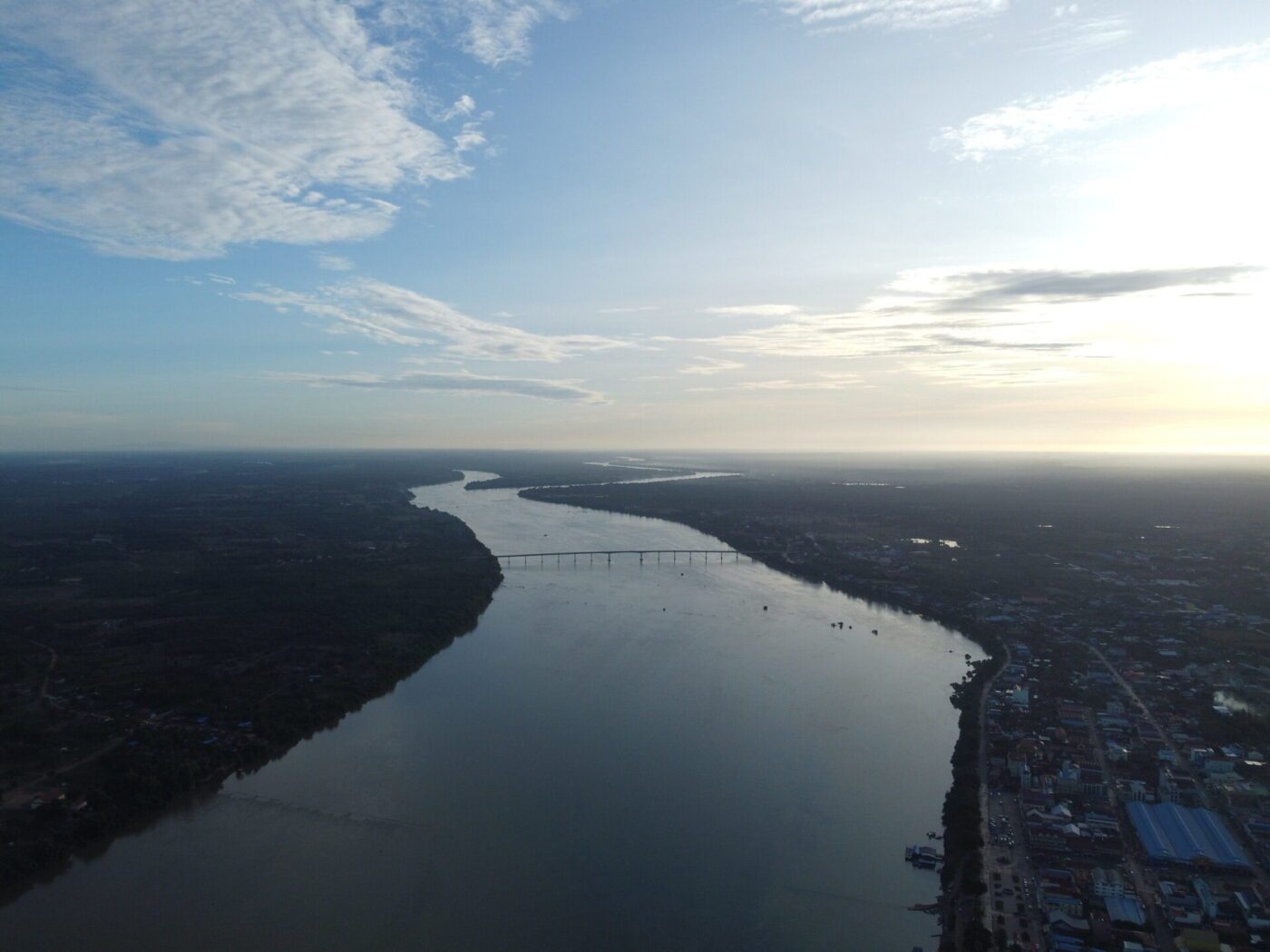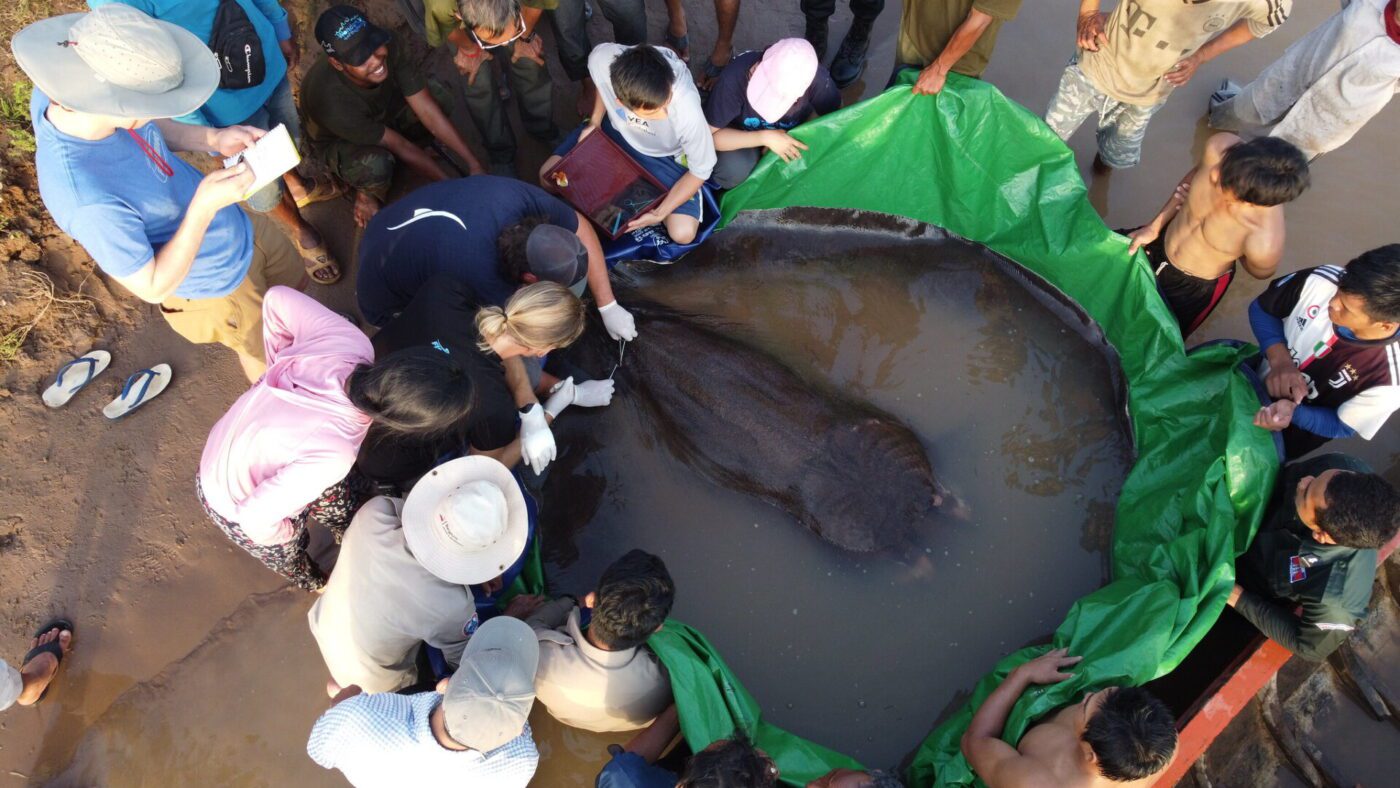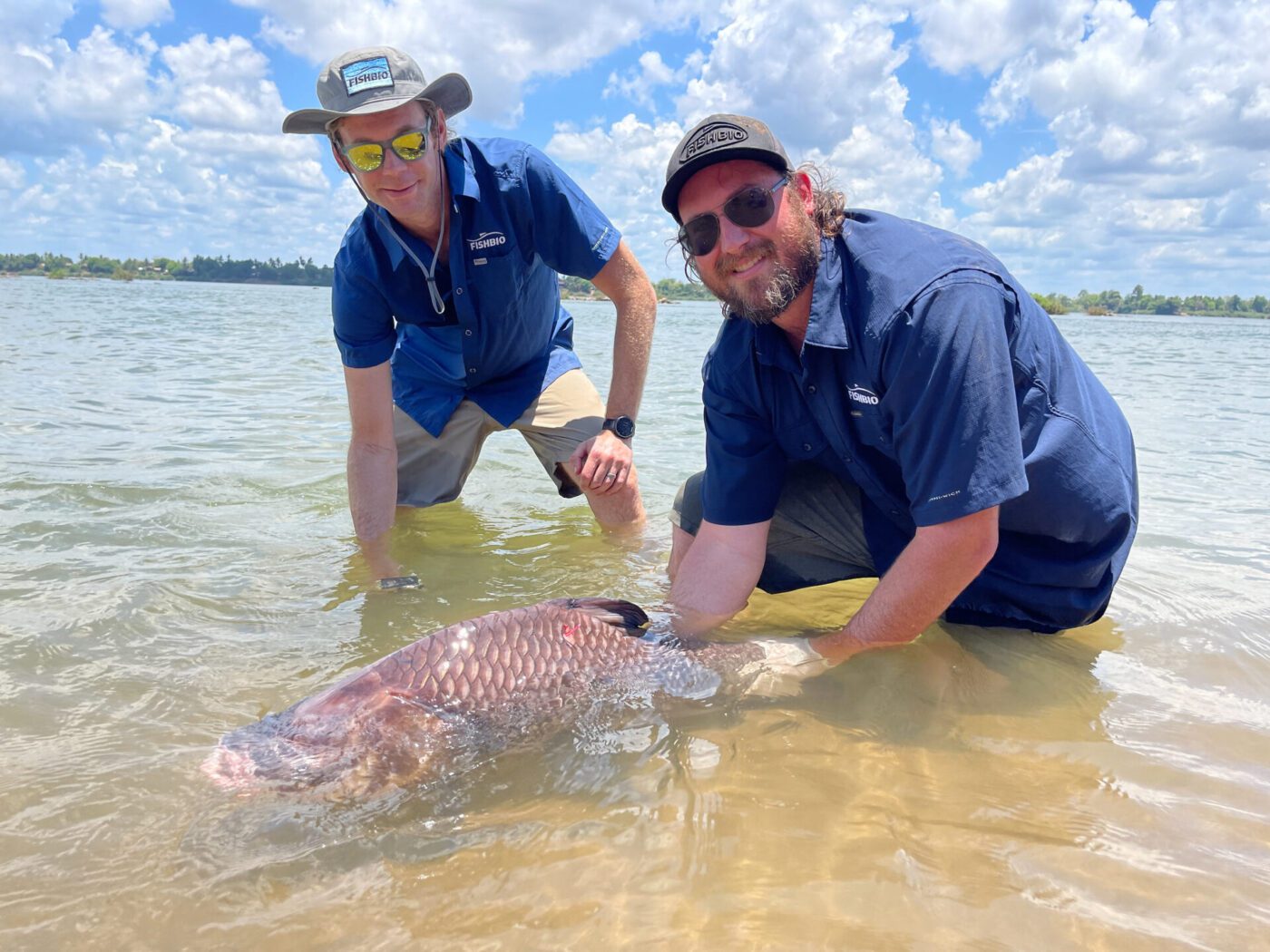Monday June 26, 2023

From drinking water to irrigation to food, rivers provide a remarkable array of ecosystem services to humans free of charge. This is particularly true of the Mekong, which yields an annual fish harvest of over 1.8 million tons per year. In addition to providing critical protein in the diets of millions of people, the Mekong’s fish community also hosts unique biodiversity, including iconic megafish species like Mekong giant catfish (Pangasianodon gigas) and giant freshwater stingray (Urogymnus polylepis). However, the region’s expanding population and rapid development have put this globally significant ecosystem at a critical decision point. Increasing demand for electricity has led to the planning of hydropower dams at two locations in Cambodian Mekong, the construction of which would dramatically impact the river’s important fisheries and biodiversity. At the same time, the recent, surprising discovery of the world’s largest freshwater fish between the two proposed mainstem dam sites contributed to the Cambodian Ministry of the Environment’s recent proposition to designate the reach of the river from the border with Lao People’s Democratic Republic (Lao PDR) in the north downstream to the Cambodian city of Kratie as a UNESCO World Heritage Site. These two paths represent dramatically different futures for the river and the region as a whole, and there is an urgent need to consider the best available science in the decision-making process. To this end, FISHBIO scientists and partners from USAID’s Wonders of the Mekong project recently published an initial report of findings from an ongoing study of fish migration in the Cambodian Mekong (Lee et al. 2023).
Since 2022, biologists from FISHBIO have been working with local partners to conduct the first-ever acoustic telemetry study of fish migration in the Cambodian Mekong. Supported by Wonders of the Mekong, the goal of this study is to document the movement of fish throughout the basin, including in the mainstem Mekong in the vicinity of proposed dam sites and across the national border with Lao PDR, as well as in the Sekong, Sesan, and Srepok (3S) tributaries. While establishing the receiver network for this project, the field team happened to be in the right place at the right time, as they received a call from a local community indicating a remarkably large giant freshwater stingray had been captured. Seizing this unique opportunity, the crew traveled to the location of capture and tagged the very first fish for the project, which was later revealed to be the largest freshwater fish on record. This represented a rare opportunity to learn about the behavior of this cryptic species, and the team has continued to monitor the movements of the giant stingray over the past year. Her short distance movements in and around a deep pool in the river indicate a small home range, suggesting the area where she was captured may represent valuable habitat for her species.

Over the next year, nearly 300 fish representing another 26 species were tagged and released in Cambodia and Lao PDR by the Wonders of the Mekong team and the Mekong River Commission’s Joint Environmental Monitoring team, respectively. Although the study is ongoing, the initial data collected by the receiver network is providing valuable insight into the movements of migratory fish species in the river system, which include rapid, long-distance movements through the proposed dam sites.
Following the discovery of the stingray, Wonders of the Mekong arranged a workshop on the ecology and conservation of stingrays in Cambodia in the city of Stung Treng in August of 2022. This workshop included scientists, government officials, NGO staff, and fishers from villages throughout the region. The goals of this workshop were to gather and organize local and scientific knowledge on the giant freshwater stingray and the closely related Mekong stingray (Hemitrygon laosensis) in Cambodia, and to identify critical knowledge gaps. Notably, local fishers reported catching both species of stingray throughout the ~180 km reach of the Mekong from Lao PDR to Kratie, as well as in the 3S basin. The information on stingray distribution gathered through these fisher surveys combined with the data collected through the acoustic telemetry study represent significant findings that may be used to inform the decision between proposed dams and a World Heritage Site designation. The urgency of the situation led the Wonders of the Mekong scientists to publish their initial findings in hopes that they may help inform management and planning for the region’s future.
The giant stingray’s tag is nearing the end of its battery life. Soon it will send its final ping, and she will vanish into the depths as spontaneously as she emerged. But even unseen, her presence in the Mekong serves as a hopeful reminder that the river still contains wonders, and that preserving this remarkable biodiversity should be a priority for the future.

This post was featured in our weekly e-newsletter, the Fish Report. You can subscribe to the Fish Report here.
